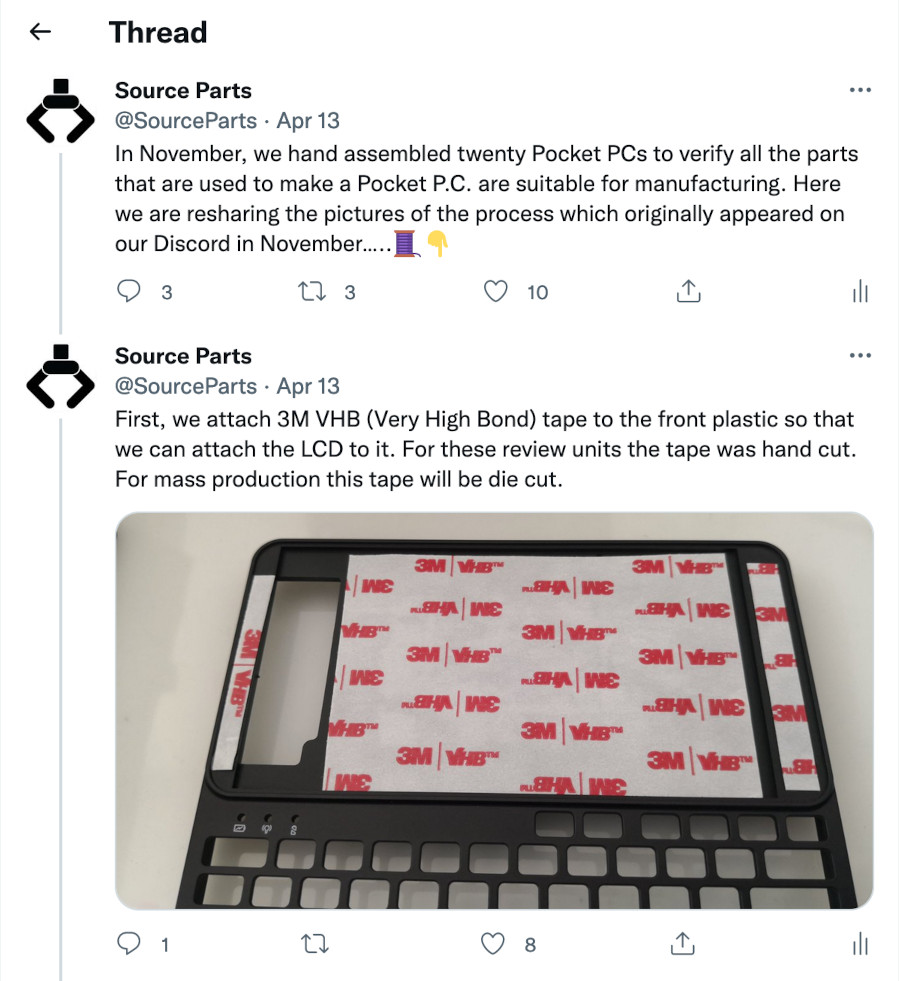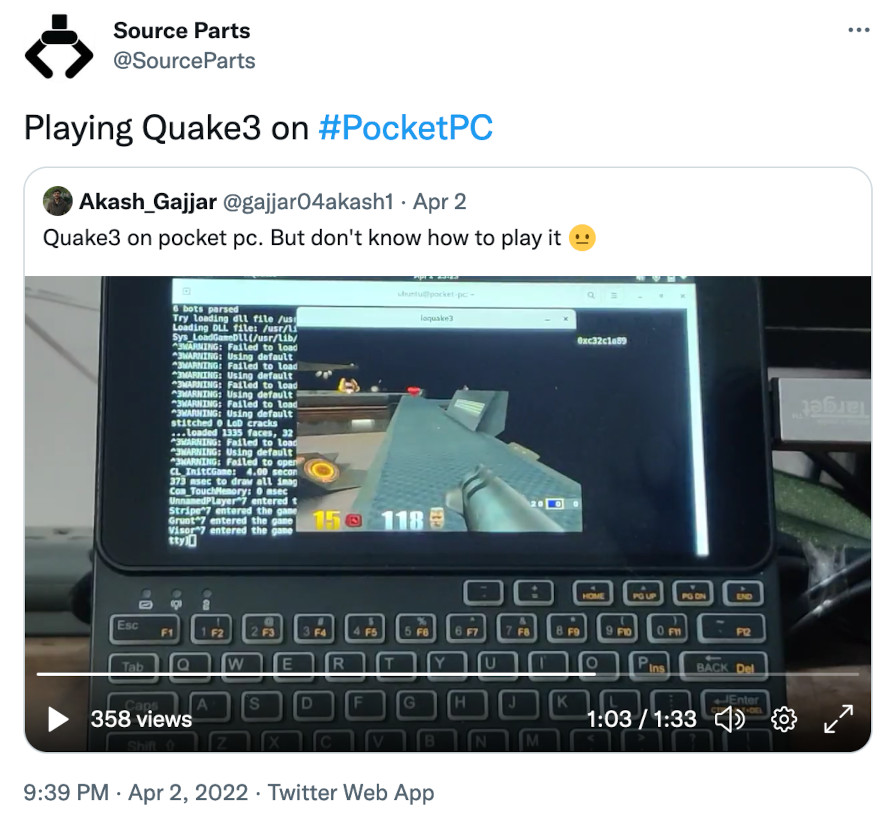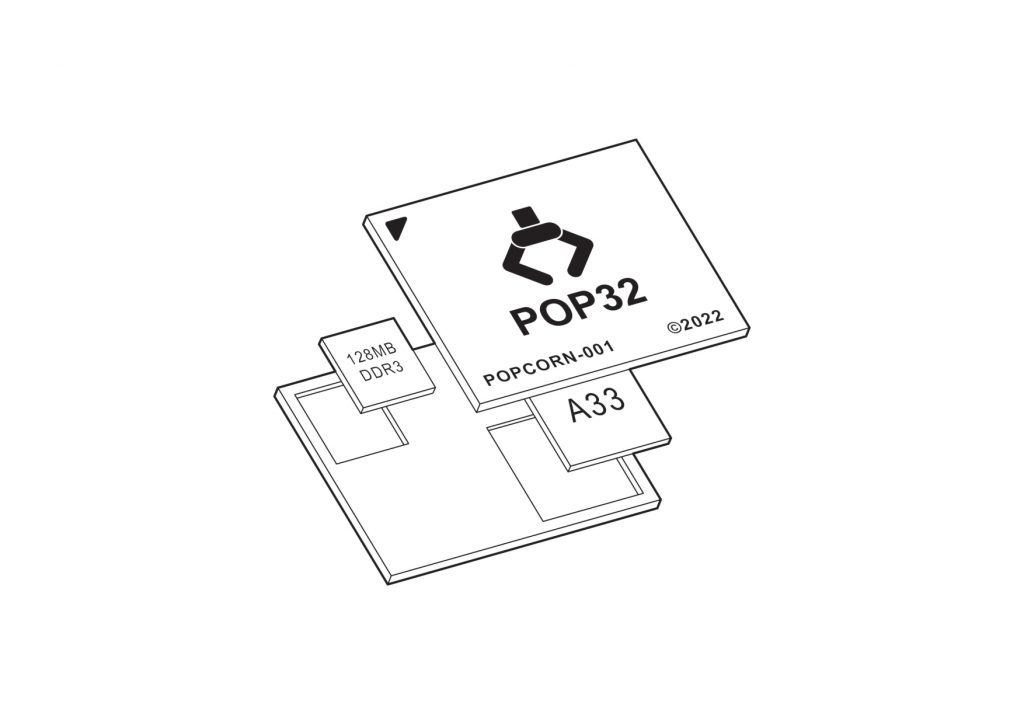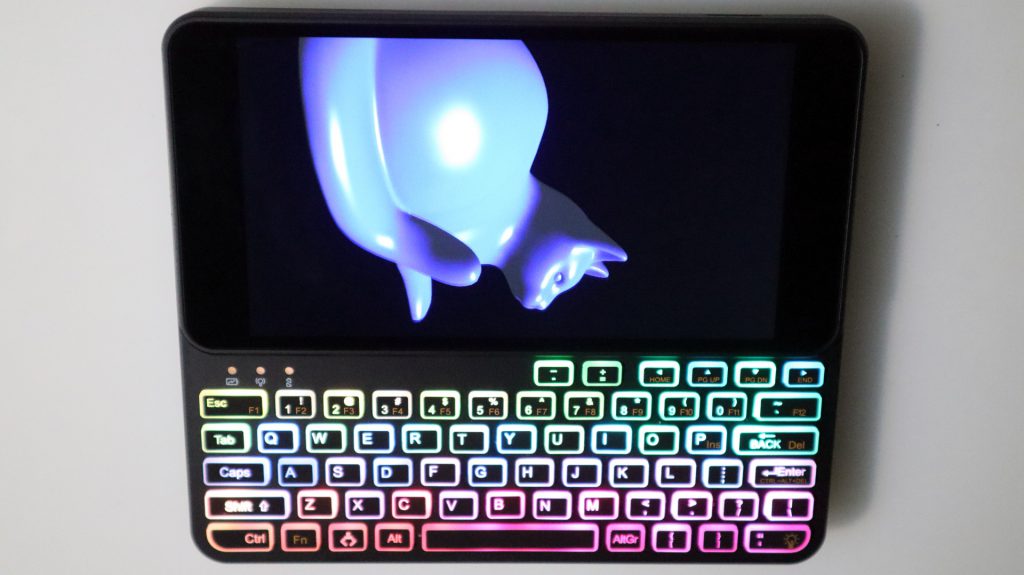In this update, we would like to share with you the past, present and future of Pocket P.C. and Source Parts Inc, the company behind Pocket P.C.
Where are we now?
Pocket P.C. plastics are currently awaiting painting at the manufacturer. When we placed the order, they warned us that there might be delays in scheduling the painting. Our plastics manufacturer is somewhat unique in Shenzhen in that it has a paintshop that is certified by the government. This means that they have to follow a certain protocol favoring very large orders. However, the quality of their work is exceptional and we have been assured that they will complete our order as soon as they can.
In the meantime, we have been optimizing the automatic testing process and standard operating procedures (SOP) for assembly. We have shared a little about our testing process so far in tweets. We are planning to share much more about how we have designed, built and programmed the various fixtures required for mass production of our products.
We need help.
Source Parts Inc, the company behind the Popcorn Computer brand and Popcorn products, is run by a small team. Jose Torres, our company’s CEO, is also the lead engineer behind everything from sourcing, design, manufacturing, testing and logistics. He also is the person responsible for web development, social media and customer service. As our product catalog grows and as more devices will get into the hands of customers, we will need help managing our products development and production, as well as generating documentation and social media content. We are currently looking to partner with an experienced project manager who has worked on both hardware and software projects. We are also looking for technical writers and content creators to help contribute to our documentation, social media videos and blog posts. Just reply to this email if you would like to help us in either of these categories.
What’s next?
Pocket P.C.
The final design that we sent into production started development in late 2019. As you know, the pandemic seriously derailed our plans. The current version of Pocket P.C. is based on design decisions made when the component market landscape looked much different. The market conditions have changed drastically because of the pandemic and the subsequent component shortage. Luckily, we purchased all the major components for a production run that will cover all pre-orders and an additional one hundred or so units to allow us to have a small inventory after we start shipping. There are around 650 preorders in total with almost a 50/50 split of the Wi-Fi/BT only version and the LoRa/GPS version. We have placed an order of 800 units with our manufacturers.
We want you to help influence the next step in our path. Everyone has their own needs and requirements for a portable Linux device and it would be great to reach a consensus with our fantastic community on what a future version of Pocket P.C. would look like.
We have talked to Qualcomm about potentially using their processors in a future version of Pocket P.C. and they have suggested using the QCS610.
Qualcomm QCS610 application processor | Octa-core (8 core) smart 4K camera SoC with enhanced AI
Upon preliminary review, this appears to be an extremely capable processor.
We reached out to Qualcomm because we were inspired by Caleb’s work on the OnePlus 6 which features the Snapdragon 845. They’ve been successful in running mainline Linux on Android with some extra patches. See his tweet about it here: https://twitter.com/calebccff/status/1558476611233742849
Realistically, the next version may take a year or more of development to get units into the hands of users. When the time comes, we will welcome the collaboration of our community in the development of the new unit and, with our presence in Shenzhen and our handling of sourcing and manufacturing, our journey will be exciting and unique.
For now, our focus is on getting Pocket P.C. completed and delivered to all of you have been so patient. For this we are grateful.
At this time, we don’t plan on building a Raspberry Pi version mainly due to the extremely unpredictable supply chain and current high per unit cost of Raspberry Pis that are able to be purchased or imported into China.
Whatever the next version of Pocket P.C. ends up being, we want to ensure that if we do a crowdfunding campaign or accept pre-orders, we won’t launch our campaign or accept pre-orders until the hardware is completed and in the hands of software developers.
Build your own Pocket P.C.
Starting next month, we will begin selling the parts that comprise a Pocket P.C.
This includes:
- Our custom 1920×1080 MIPI DSI capacitive touch display
- The Front, Back and Cover Plastic Enclosure
- Silicone Keypad, RGB LED Diffuser, Metal Dome Keypad Sticker
- Lithium-ion Battery
- LoRa Antenna
This means that if you really need that particular radio such as NFC or want to use that processor you have been eyeing and must have in a portable device, now is your chance. Our engineers are available for design reviews or PCB layout in your CAD suite of choice.
Much more information about the build-your-own-Pocket P.C. process and help that we can offer will come later this month in another update.
Popcorn Computer Documentation
We have built out new documentation infrastructure to supplement our wiki and to provide a semi-permanent place to share information about our products. Each product from Kettlepop to Pocket P.C. have dedicated GitHub repositories for their own documentation page. The documentation is in very early stages. If you would like to see anything in specific, please feel free to open an issue on the relevant repository and we will prioritize your request.
https://docs.popcorncomputer.com/
More to come next week
We are in the process of open sourcing part of our web flashing tool that we developed after over two years of effort. We hope that it makes the process of getting started with embedded computers easier and allows more people to give them a try. Keep an eye out for our next update!






















